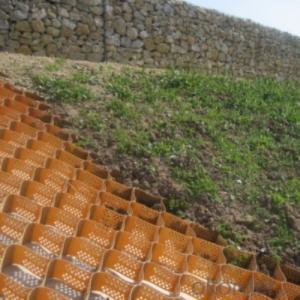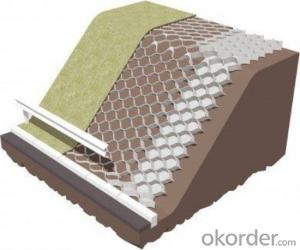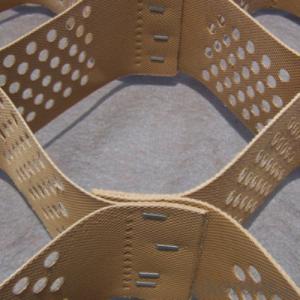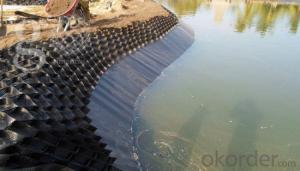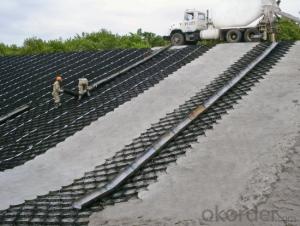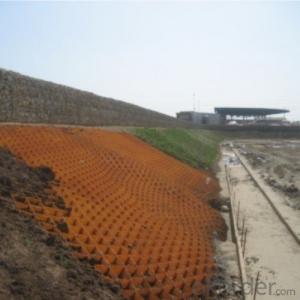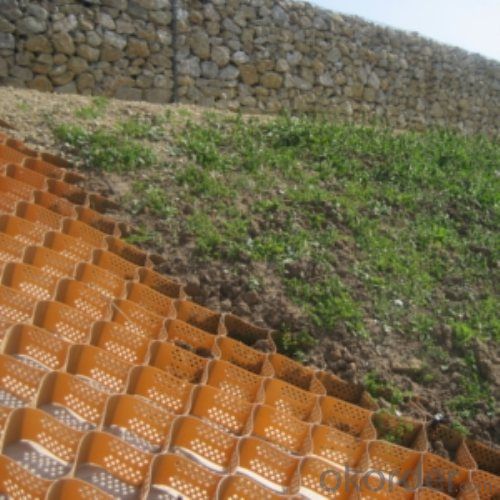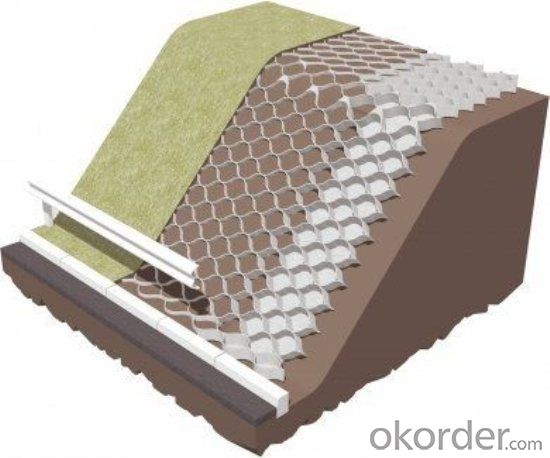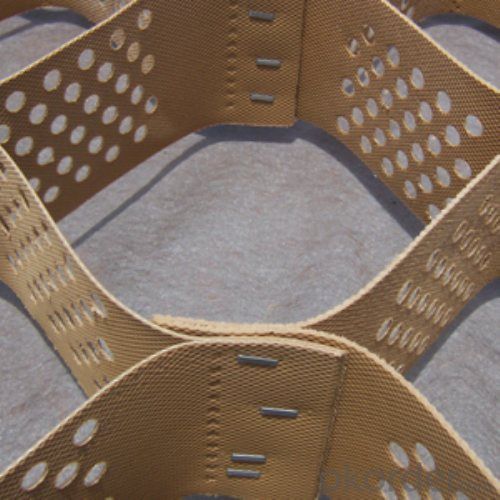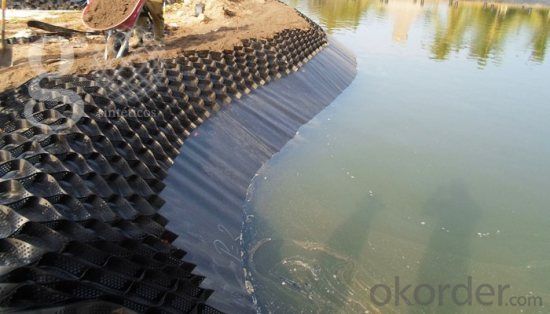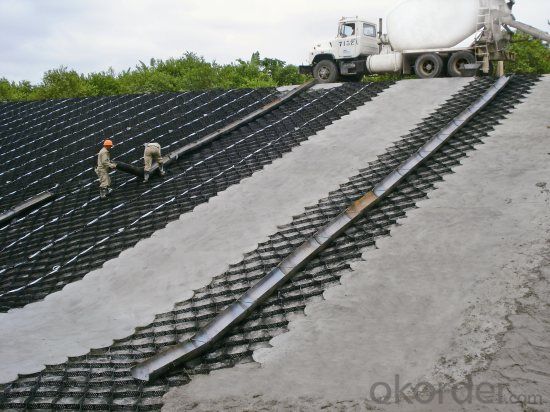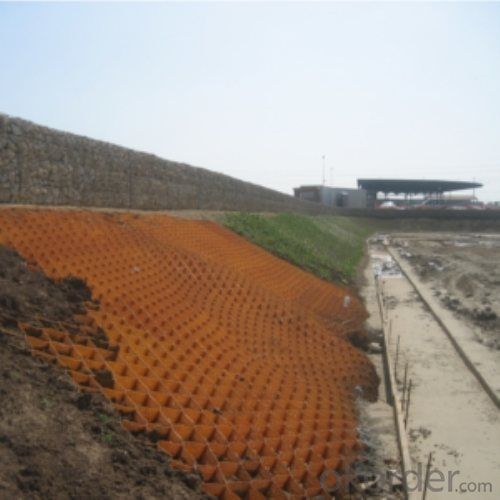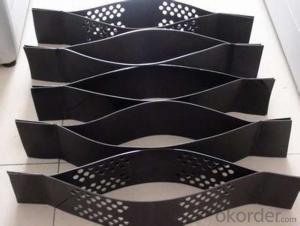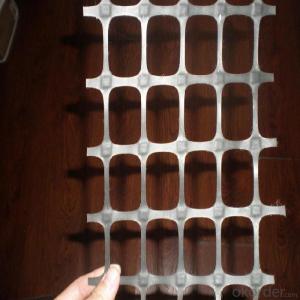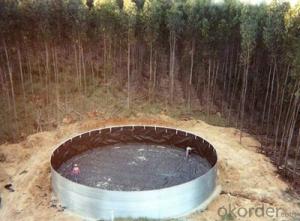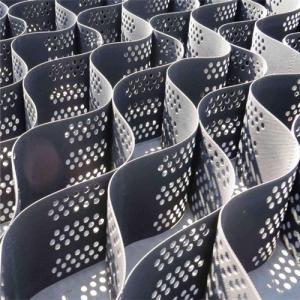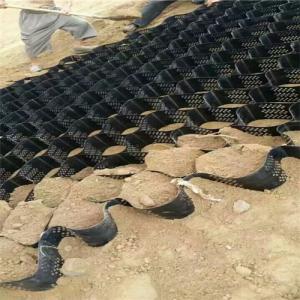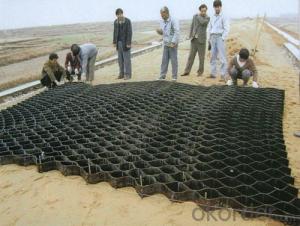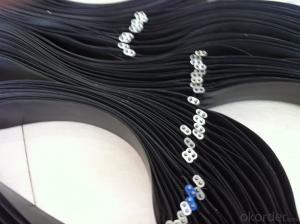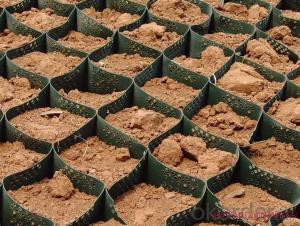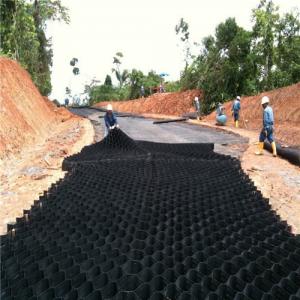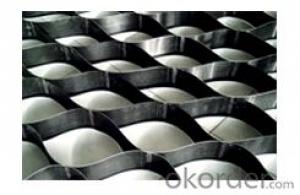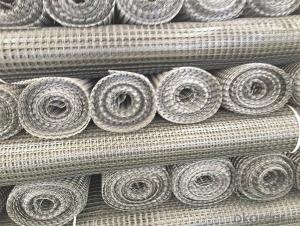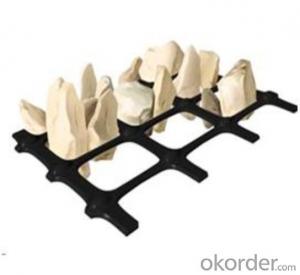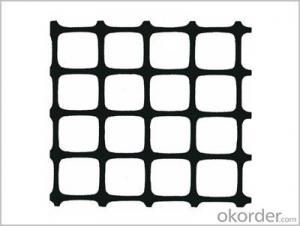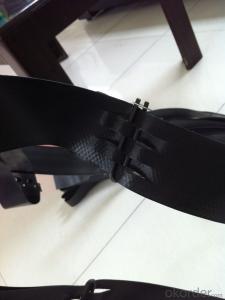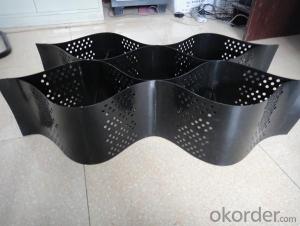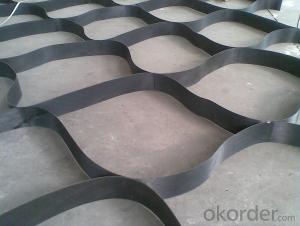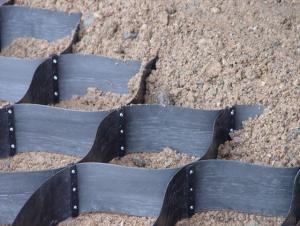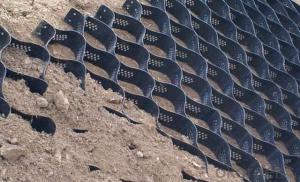Geocell of Enhanced for Architectural Engineering
- Loading Port:
- Qingdao
- Payment Terms:
- TT or LC
- Min Order Qty:
- 10000 m²
- Supply Capability:
- 500000 m²/month
OKorder Service Pledge
OKorder Financial Service
You Might Also Like
Geocell of Enhanced for Architectural Engineering
Description Of Geocell of Enhanced for Architectural Engineering
Geocell is three-dimensional network structure, which is made up of HDPE sheet material
Main Features of Geocell of Enhanced for Architectural Engineering
1, with retractile, transportation can be shrunk and stacked, the construction can be a Lacheng mesh, fill in the dirt, gravel, concrete and other loose material, with strong lateral restrictions and the stiffness of the structure.
2, light material, abrasion resistance, stable chemical properties, photooxidation aging, acid and alkali, applicable to different soil and desert soil conditions.
Applications of Geocell of Enhanced for Architectural Engineering
1, for the stability of highway, railway roadbed.
2, used to bear the weight of the embankment and shallow water treatment.
3, used to prevent the landslide and the load of the gravity of the hybrid retaining wall.
IMages of Geocell of Enhanced for Architectural Engineering
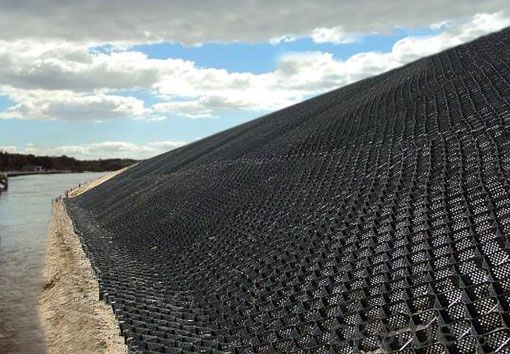

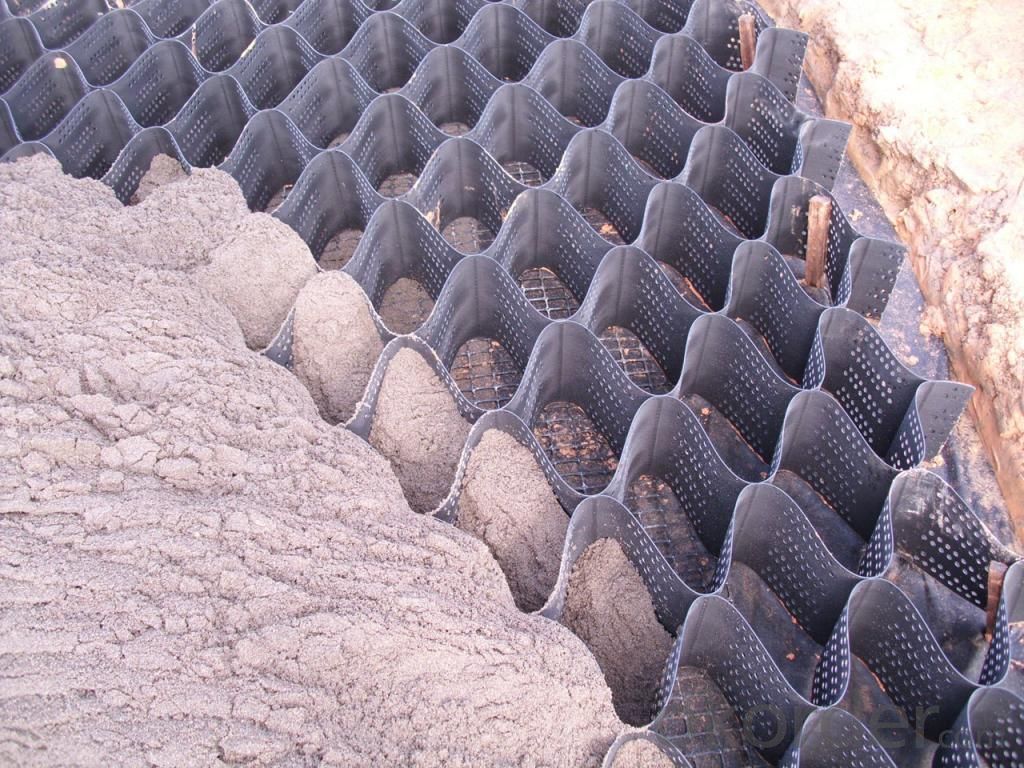
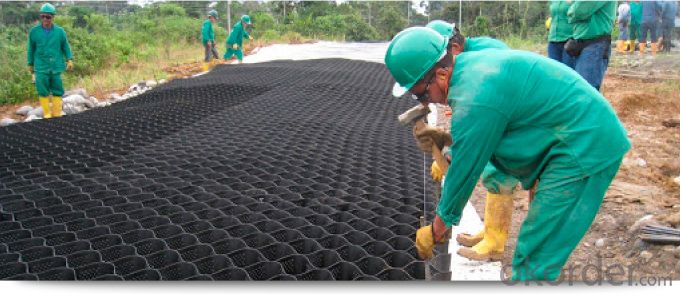
FAQ:
1. What are we supplying?
We are specialized in producing .geotextile , geocell, geogrid
2. How Many years experience do we have?
We have been exported to more than 15 countries in the past 10 years.
3. How long do we usually reply your request?
We always reply our customer within 12 hours.
- Q: Can geocells be used in green infrastructure projects?
- Yes, geocells can be used in green infrastructure projects. Geocells are widely used in various green infrastructure applications such as stormwater management, erosion control, and soil stabilization. They provide an effective and sustainable solution by promoting the growth of vegetation, reducing runoff, and preventing soil erosion. Additionally, geocells can be easily integrated with other green infrastructure elements like permeable pavements and bioswales, further enhancing their benefits in green infrastructure projects.
- Q: Can geocells be used in channel protection projects?
- Yes, geocells can be used in channel protection projects. Geocells are a type of geosynthetic product that can be filled with soil, aggregate, or concrete to create a stable and erosion-resistant structure. They are commonly used in channel protection projects to prevent soil erosion, stabilize slopes, and control water flow. Geocells provide a cost-effective and environmentally friendly solution for protecting channels against erosion, while also allowing for vegetation growth and maintaining natural habitats.
- Q: Can geocells be used in seawall construction?
- Yes, geocells can be used in seawall construction. Geocells are a type of cellular confinement system that can provide stability and reinforcement to structures. In seawall construction, geocells can be filled with various materials such as soil, sand, or concrete, creating a strong and erosion-resistant barrier against the forces of waves and tides. They can help enhance the structural integrity and longevity of seawalls while also allowing for effective drainage and vegetation growth.
- Q: Are geocells resistant to chemical leaching?
- Yes, geocells are generally resistant to chemical leaching. The material used in geocells, such as high-density polyethylene (HDPE), is chemically inert and does not easily react with or leach chemicals into the surrounding environment. This makes geocells a reliable and durable solution for various applications where chemical resistance is required, such as in containment systems or lining for landfills.
- Q: Are geocells resistant to abrasion?
- Yes, geocells are resistant to abrasion.
- Q: What is the maximum temperature geocells can withstand?
- The maximum temperature geocells can typically withstand ranges from 70 to 90 degrees Celsius, depending on the specific material and design of the geocell.
- Q: Can geocells be used for ground reinforcement?
- Yes, geocells can be used for ground reinforcement. Geocells are three-dimensional honeycomb-like structures made of high-density polyethylene. They are commonly used in civil engineering and construction projects to stabilize and reinforce soils, especially in areas with poor soil conditions or high erosion potential. Geocells can effectively distribute loads and confine infill materials, providing enhanced stability and strength to the ground. They are versatile and can be used for various applications, including road construction, slope protection, and erosion control.
- Q: How do geocells contribute to the reinforcement of soils?
- Geocells contribute to the reinforcement of soils by confining and stabilizing the soil particles within their cell walls, which helps to increase the load-bearing capacity, improve soil stability, and prevent soil erosion. Additionally, the geocell structure provides a flexible and permeable foundation for various applications such as road construction, slope protection, and erosion control, enhancing the overall performance and longevity of the soil.
- Q: Can geocells be used in coastal protection?
- Yes, geocells can be used in coastal protection. Geocells are a type of cellular confinement system that can be filled with various materials such as soil, sand, or gravel. They provide stability and reinforcement to coastal structures, preventing erosion and protecting against wave action. Geocells are commonly used in the construction of revetments, breakwaters, and shoreline stabilization projects, making them an effective solution for coastal protection.
- Q: Can geocells be used in pipeline protection?
- Yes, geocells can be used in pipeline protection. Geocells are three-dimensional cellular confinement systems that can provide stability and support to the soil surrounding the pipeline. They can prevent soil erosion, distribute loads, and mitigate the effects of differential settlement, thereby enhancing the overall protection of the pipeline.
Send your message to us
Geocell of Enhanced for Architectural Engineering
- Loading Port:
- Qingdao
- Payment Terms:
- TT or LC
- Min Order Qty:
- 10000 m²
- Supply Capability:
- 500000 m²/month
OKorder Service Pledge
OKorder Financial Service
Similar products
Hot products
Hot Searches
Related keywords
